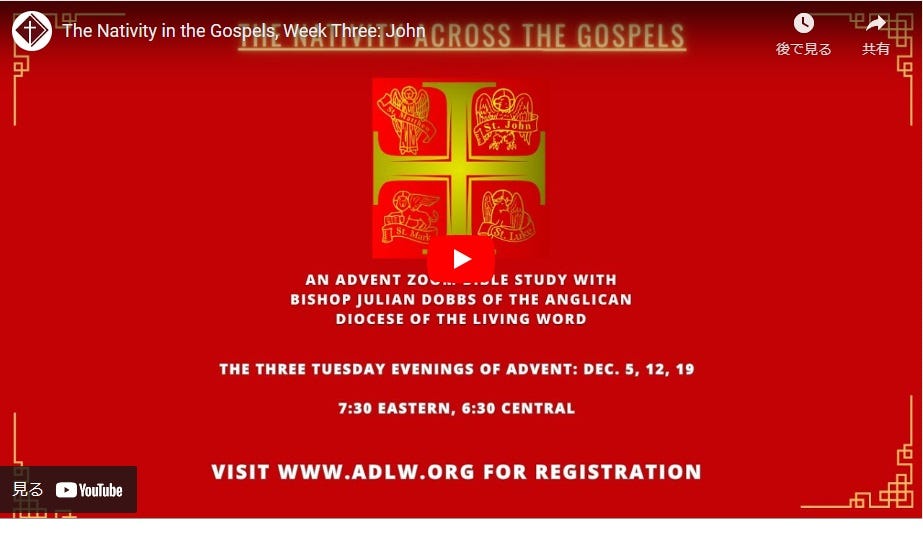Advent study on the Nativity in the Gospels
The final part of a Three-Part series in which Bishop Julian dives into the gospel accounts of Jesus' birth
The conclusion of this three-part study looked at the markedly different approach to the birth of Christ in Chapter 1 of John’s Gospel. John’s Gospel is based on what he saw and heard first-hand, but also informed by decades of Spirit-guided reflection on what it all meant. The “disciple whom Jesus loved” doesn’t mention Mary or Joseph or angels or shepherds, but rather goes behind the visible reality of Nativity to its meaning. The Incarnation is the foundation upon which all of Christianity depends. Take the incarnate Son out of Christianity and nothing remains—it’s like taking numbers out of math, doctors out of medicine, sunshine out of the daytime.
John makes several astonishing claims about Jesus in his Prologue (1:1-14). He says Jesus is the Eternal One. With the brilliant choice of “Logos” (Word) to describe Jesus, John incorporates both the Jewish understanding of the Word as the expression of God’s creative power, as we see for instance in Genesis 1 (“Let there be light”), and the Greek philosophical understanding of the Logos as the organizing principle in a world of change. He says Jesus is the Revealed One. The Nativity is like a window opening up onto a room that was completely dark. It illuminates and makes sense of reality and allows us to see the light and life of God, which alone can heal spiritually dead and blind humanity. John says Jesus is the Promised One, anticipated in the whole of the Old Testament but nowhere more so than the promise of Immanuel given to Isaiah. John also acknowledges the tragic reality that Jesus is the Rejected One. Both 2,000 years ago and today, inexplicably, some reject Jesus, stop their ears to his message, choose to make friends with the darkness of the world and refuse to know the God who makes himself known. But John notes that Jesus is also the Saving One. To those who say “yes” to Jesus, he brings forgiveness through the sacrifice of his own life—“Behold, the Lamb of God, who takes away the sin of the world!” (John 1:29)—and makes us children of God. And finally, John recognizes Jesus as the Glorious One. Having always existed in the glory of the godhead, the Son “set up his tent among us” (1:14), revealing God as the One who is full of grace and truth. We need never be in the dark about who God is. The same God who created and sustains all things addresses us not merely in words on a parchment but in a Person, in approachable weakness, Immanuel seeking to connect and interact with the human beings he created in his image.



